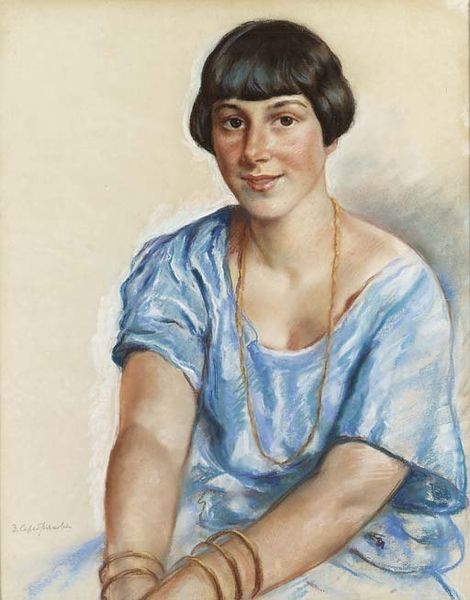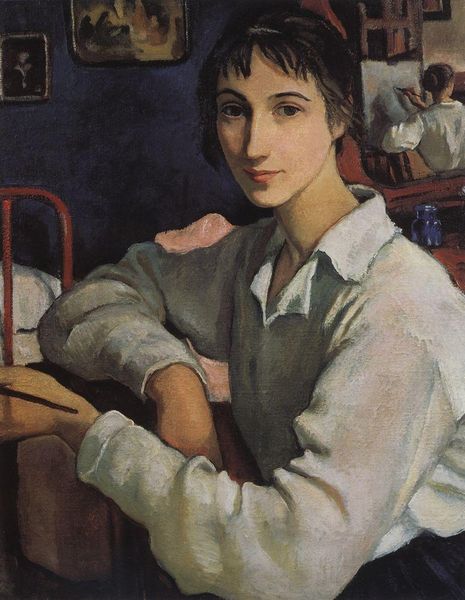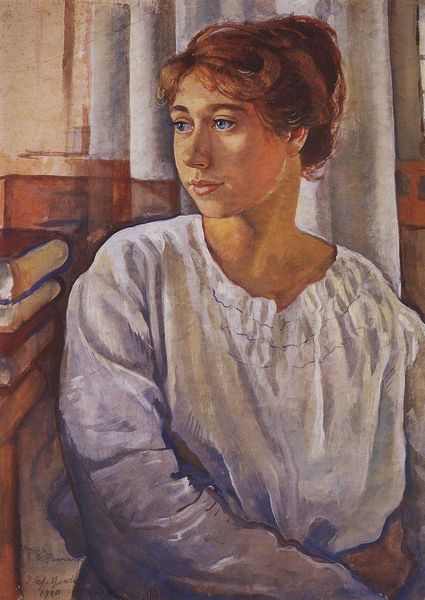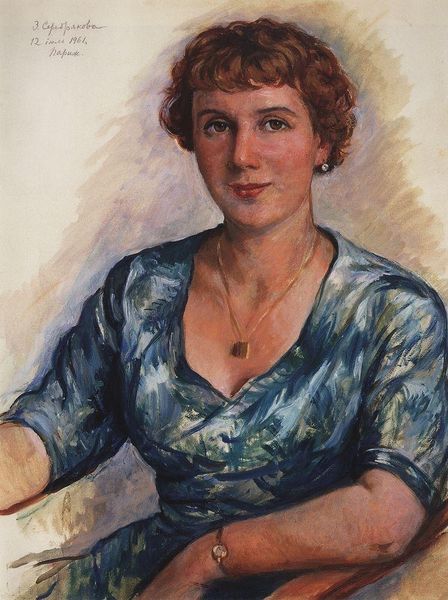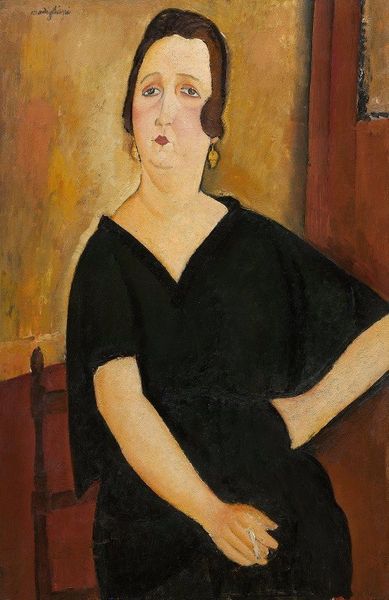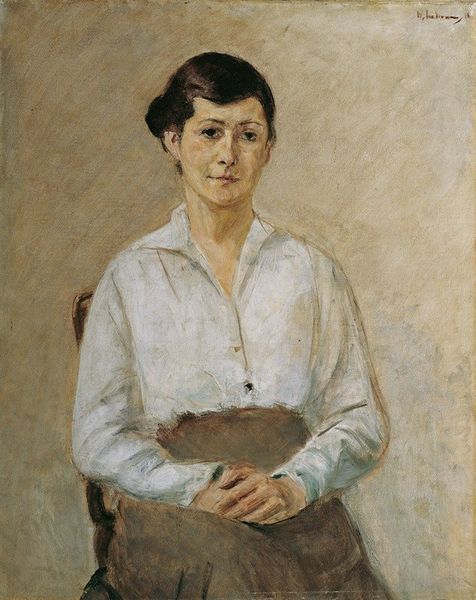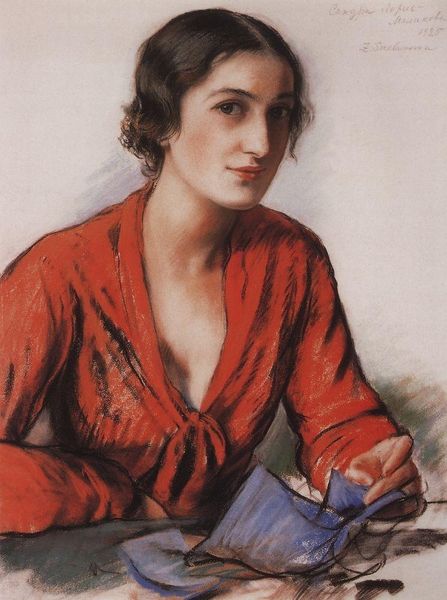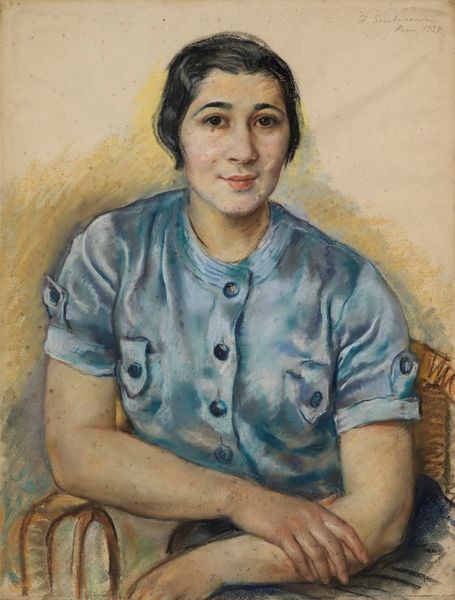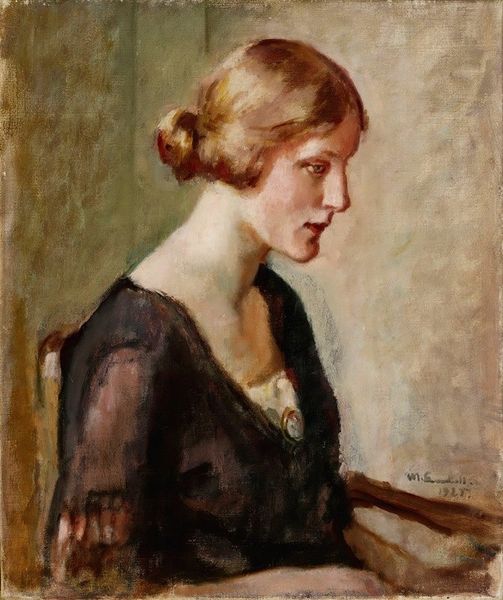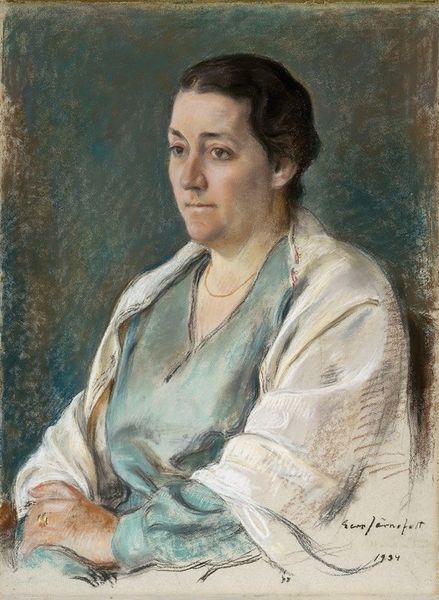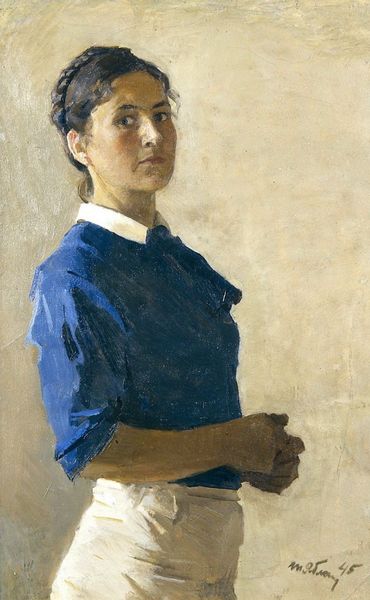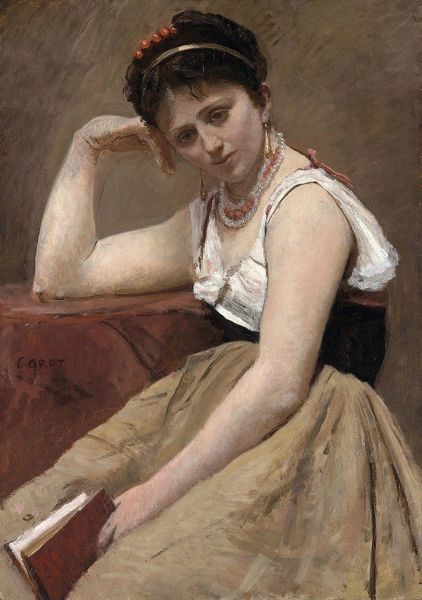
Copyright: Zinaida Serebriakova,Fair Use
Editor: Here we have Zinaida Serebriakova's "Portrait of S.N. Andronikova Halpern," painted in 1924, using oil paints. It's quite a serene painting, almost intimate. What draws your attention when you look at this piece? Curator: I see a window into the complexities of female identity and artistic expression in a revolutionary era. The subject's gaze is direct, yet there's a sense of quiet introspection. This piece compels me to consider the sitter, Halpern, not just as a muse, but as a woman navigating a rapidly changing society. Serebriakova was herself challenged, witnessing shifts in the role of women during a pivotal time in Russia, and then being pushed to live outside her home country. How does her status in this piece affect its interpretation? Editor: So, you are thinking about how the Russian Revolution influences Serebriakova's choice of portraying a woman with such an insightful yet reserved demeanor? Curator: Precisely. Serebriakova comes from an established family of artists. Examining the artwork through a feminist lens helps unpack her nuanced positioning as a woman artist, breaking from the rigid constraints imposed both before and after the Revolution, even if she was part of it in some ways. The "intimist" theme here is less about comfort and more about negotiating one's inner life within external pressures. Does the colour palette suggest anything about that to you? Editor: It does have some quite muted and natural colors that create that feeling of reserve. What has struck me the most is how much we can interpret through this painting if we consider broader social and cultural contexts. Thank you. Curator: Indeed. By connecting the visual language of the painting to the sociopolitical conditions of the time, we gain a much richer appreciation for both the artist’s intent and the subject’s lived experience.
Comments
No comments
Be the first to comment and join the conversation on the ultimate creative platform.
